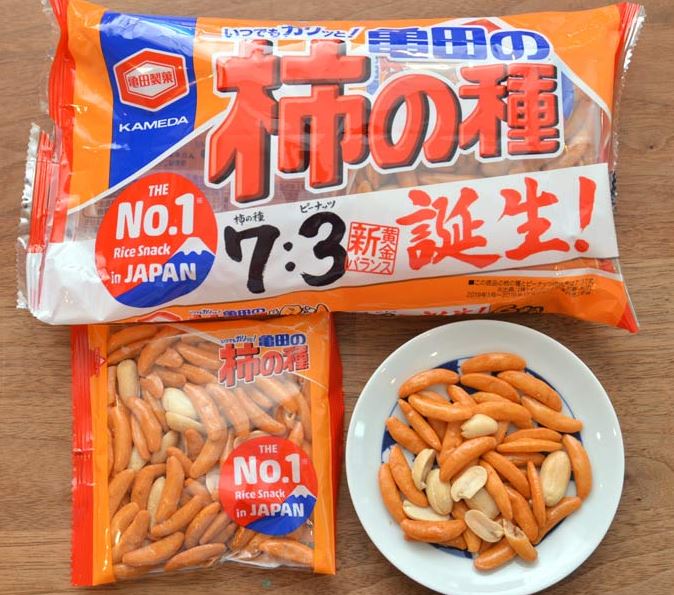Kakinotane: Japan's Most Famous and Popular Rice Cracker
CONTENTS
Kakinotane, Rice Crackers, Were Born from Imperfect Oval Crackers
What is kakinotane? With their hot and spicy taste, kakinotane ("kaki" is persimmon in Japanese and "tane" is seed, so literally meaning persimmon seed) rice crackers go well with drink, especially beer. Recently, kakinotane coated in chocolate has also made its appearance and even more various flavors are invented from time to time. But even if various types are coming out on the market, the shape still remains unchanged. The shape is neither oval nor spindle-shaped. So what gave birth to this asymmetrical shape?
The History of Kakinotane
In fact, the shape was formed by accident.
This happened during the Taisho Era (1912 to 1926).
In Nagaoka City, Niigata Prefecture which is located 200 miles in the north-west of Tokyo, known as a major rice-producing area, Yosaburo Imai, the founder of Naniwaya Confectionery, was tackling the task of making rice crackers using glutinous rice.
After a long struggle, Imai finally managed to make a metal pattern that was oval in shape. One day, however, Imai inadvertently stepped on the metal pattern. No matter how he tried, he could not restore the metal pattern to its original shape. When, out of necessity, Imai used the deformed metal pattern to make rice crackers, the result, as was expected, was rice crackers in the shape of a deformed oval. This was the beginning of the shape of kakinotane.
When these deformed rice crackers were put on sale, the main client responded with, “These are not oval shaped. They look like persimmon seeds.” By turning this around, however, a new product called kakinotane was born in 1923.
The Reason Why It Is Spicy
The shape is not the only distinctive feature of kakinotane. There were also some twists and turns before kakinotane acquired its current taste. Chili pepper is indispensable for the taste of kakinotane. This does not mean, however, that kakinotane was hot and spicy from the start. In the beginning, it had a soy sauce flavor similar to ordinary rice crackers. As peanuts were added to kakinotane, chili pepper was added to season the crackers because it was decided that a hot and spicy taste would go better with peanuts than a soy sauce flavor.
It is said that the first place where peanuts were added to kakinotane was a bar at the Imperial Hotel in Tokyo. It is also said that, during the last half of the 1950s, some bean shops started to mix peanuts with kakinotane to increase the volume.
The Best Ratio of Kakinotane and Peanuts

Kakinotane 7 : Peanuts 3
Kameda Seika is the most famous manufacturer of Kakinotane. Kameda Seika's Kakinotane was launched in 1966 and has been the No. 1 selling rice snack for over half a century. In fact, the original blend of kakinotane and peanuts was 7:3, but was changed to 6:4 to meet the demands of the times, and then changed back again to 7:3 in 2019.
Also, October 10th has been designated as "Kameda's Kakinotane Day" because the "1" in the number 10 looks like a persimmon seed and the "0" looks like a peanut.
Anyway, the combination of peanuts and spicy hot rice crackers was excellent and was well received. There is no doubt that it played a part in increasing the popularity of kakinotane.
- Categories
- Work in Japan: Japan Biz Cultural Words and 未分類
- Tags
- kakinotane



Don't ever stop trying. Goals!